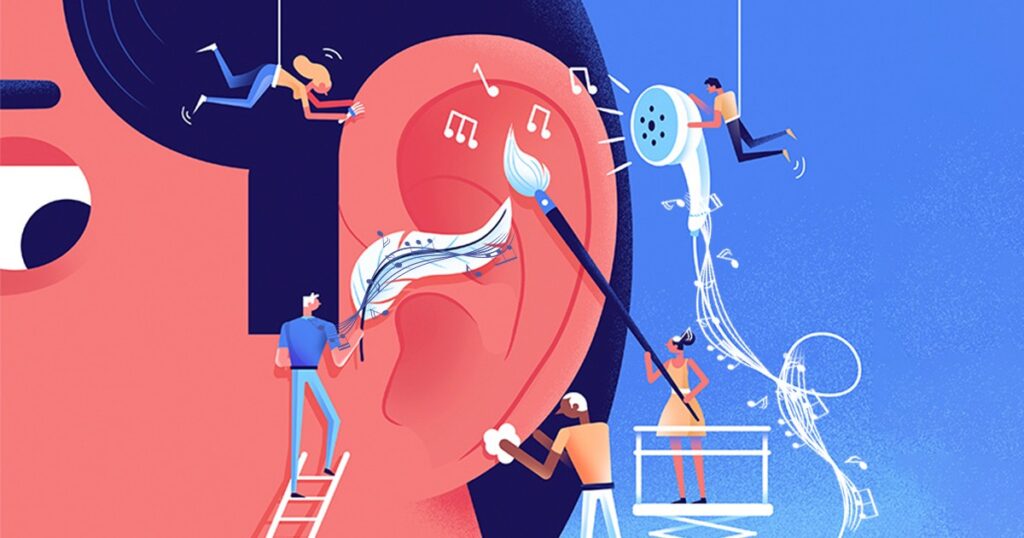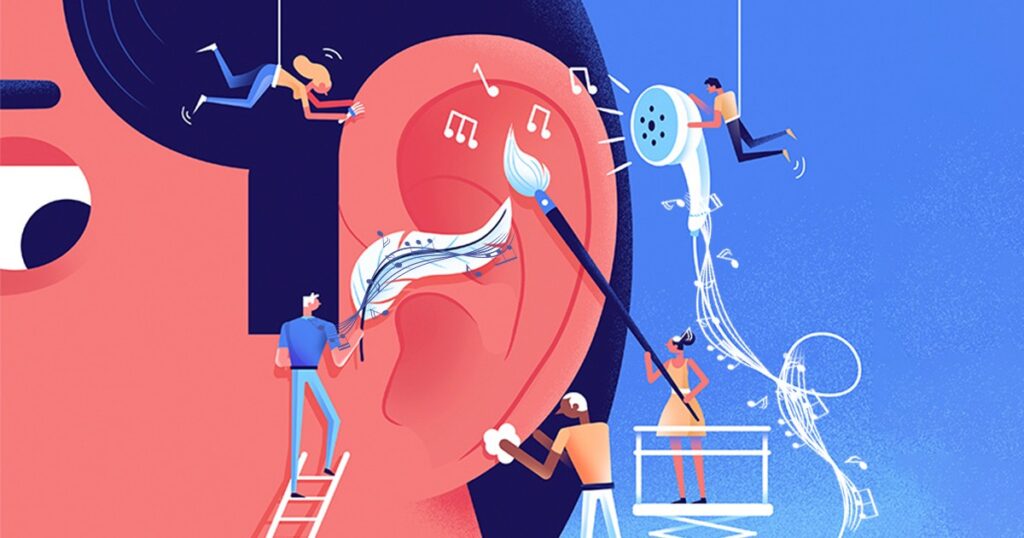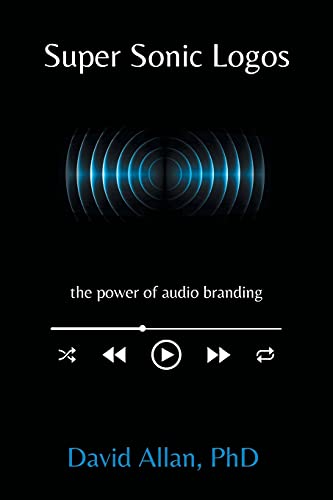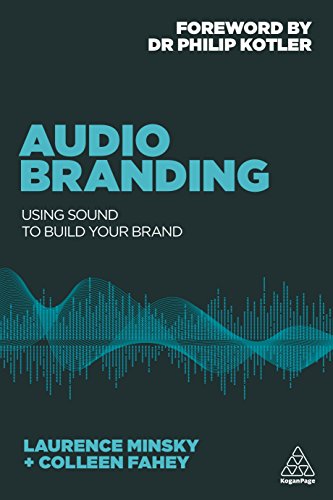
11 Feb Audio Branding: What it is and How it Works
Audio Branding: What it is and How it Works
Audio branding has always been one of the critical marketing features, but people often think of it as a one-dimensional concept. While visual content is crucial to branding, sounds also play a significant role in this field.
After all, studies proved that almost 80% of people feel happy or hungry when they hear McDonald’s audio jingle.
Sights, sounds, and smells can all evoke emotionally charged memories because the same part of the brain in charge of processing our senses is also responsible, at least partially, for storing emotional memories.
It means that audio branding can influence our moods, feelings, and behaviour. This article will show you a brief introduction to audio branding.
How Sounds Impact People

A whole science behind sounds explains their impact on the human brain. It is a complex topic, but we can narrow it down and reveal three ways how sounds impact people. Here they are:
1 – Sounds affect our moods
You’ve probably experienced it many times before because audio content quickly changes the way you feel.
While the sound of classical music makes you relaxed, nails scratching a chalkboard will probably creep you out.
In each case, audio content affects your mood directly and instantly.
2 – Sounds affect our behaviour
People tend to escape awkward tones, but they want to stay exposed to pleasant tunes. Speaking of business, it means you can exploit audio effects to influence customers on a subconscious level, making them more shopping-prone.
3 – Sounds affect our productivity
What you hear can slow you down or give you an energy boost, thus influencing your productivity. For instance, this is why athletes often listen to high-tempo music while training.
We spend most of our time in quiet environments—at home, at work, or on public transport when you think about it. Yet many people are oblivious to how this can impact their moods.
In fact, according to a recent study by Google, only one in four adults listen to music while they’re working, despite knowing that music has been proven to improve productivity.
So what does this mean for brands and businesses who want to engage with audiences through audio marketing? What does an audio branded business look like today? How do you create your own audio brand? Let us explain.
What Is Audio Branding?

Audio branding refers to using audio as part of a broader strategic approach to communicating messages across all channels. It focuses specifically on developing distinct identities and experiences within specific industries.
As such, you can break it down into six areas:
- audience definition,
- data-driven research,
- consumer psychology,
- consistent experience creation,
- growth planning,
- and future-proofing.
Audiences should not just be defined by demographics but also behaviours. This means understanding when, where, and why consumers prefer to consume content.
Understanding these factors will allow companies to develop products and services which appeal directly to them. In doing so, they’ll have greater chances of converting more sales leads, enquiries, memberships etc., ultimately increasing revenue.
For example, if you were trying to reach out to millennials in America, would you send an email campaign to every millennial subscriber in the country? (a demographic that makes up over 27% of the total US population).
Or would you segment your audience further based on age groupings, location, interests, etc.? You’d probably choose the latter option if you wanted to better target those individuals’ individual needs.
According to Nielsen, “70 per cent of millennials [in the US] said they would rather hear from someone who understands their lifestyle.”
So, if you’re targeting younger audiences, consider creating different personas for each age bracket to ensure your message resonates right along with them.
How Does Audio Branding Work?
An excellent way to start thinking about audio branding is to take a momentary break from hearing anything. When you come back to audio marketing, try taking a step back and asking yourself some simple questions: Whom am I listening to? Why am I listening to myself? What do I need to know now? Do I feel heard? Are my expectations being met?
If the answer was no, then there may still be a lot left in terms of improving your overall audio offering.
The Benefits of Audio Branding
The purpose of audio branding is to make your marketing strategy more effective. It is the only way to keep in step with the most prominent competitors and sustain the long-term profitability of your business.
However, the main benefits of audio branding are these:
1 – Develop brand identity
A brand identity is not complete without the audio element. For instance, Zoom users immediately recognise the app’s message tone, while the same goes for Skype notification sound. This is another way to distinguish yourself from other brands and become memorable.
Creating a signature sound lets you grab consumers’ attention even if they cannot see your content.
2 – Make customers active
As we already mentioned, sounds can strongly affect the mood of an average customer. It is imperative to exploit this fact and use music in real-life to make customers more active and shopping-prone.
Research showed that the pace of ambient music has the most significant effect on shoppers. The music is usually slow and relaxing because it calms down potential consumers and gives them more time to make impulsive purchases.
Therefore, audio branding will not only make you sound different from other companies, but it will also give you real sales boost in the long-term perspective.
- Allan, David (Author)
- English (Publication Language)
- 150 Pages – 07/22/2021 (Publication Date) – Business Expert Pr (Publisher)
3 – Inspire emotional reactions
Sounds do not just make the brand recognisable, but they also inspire emotional reactions. In the case of Zoom or Skype, it is the feeling of anticipation and excitement when you hear a new message in the inbox.
It would help if you seized every sense to keep the audience alert and ready to engage with your products or services.
To do this, you need to create a pleasant tune that is still unusual enough to successfully breach the audio noise barrier.
A sound like this leaves people curious to find out more about the brand and its activities, which is precisely what you want to achieve here.
4 – Increase brand loyalty
A lovely tune or a song can turn consumers into loyal fans and brand advocates.
It has to be catchy and able to win over the hearts of your audience.
For example, the “Friends” theme song has become a world-famous hit. It is not only making the TV show more popular, but it is also reminding people to come back to it and watch old episodes once again.
This is what brand loyalty is all about – making your clients satisfied and willing to come back for more.
How to Create an Audio Branding Strategy?
Here are five key steps to keep in mind when approaching any audio project:
1. Define Your Audience.
This sounds obvious. But frequently, it isn’t taken seriously enough because marketers tend to focus too much on short term gains instead of long term success. If you don’t get this right first, everything else falls apart later.
Understanding your audience takes effort and requires great collaboration between creative teams and client representatives alike. Once you’ve got a clear picture of whom you’re speaking to, you can begin to tailor your audio offerings accordingly.
Consider finding more information about your listeners, including age, gender, income level, marital status, profession, education level, and other personal details. Then compare it against your existing database to see if there is overlap. By identifying commonalities among users, you can build stronger relationships with them.
2. Use Data-Driven Research
Once you’ve identified your ideal customer profile, you should learn more about them. Ask questions like what type of music they enjoy, what devices they use, whether they prefer hands free headsets, what hours they typically work, and so on.
You could even ask them to complete surveys or participate in online questionnaires to gather additional user insights. Remember, nothing beats real-life testing! Make sure to avoid relying solely on gut feeling—you wouldn’t give anyone the same treatment without proper market research.
Your findings can help identify new opportunities or uncover potential problems with your current offerings. They can include product performance, return rates, conversion ratios, call drops, bounce rates, churn rates, satisfaction levels, etc.
These metrics will enable you to improve your technology and operations, ensuring your clients always receive top quality service.
3. Understand Consumer Psychology And Behaviour
While researching your audience, it’s important to remember to stay human. There shouldn’t be a sense of roboticness or indifference among staff members.
Avoid giving off negative impressions with language choices like saying something is ‘cool’, ‘awesome’, ‘great’, ‘amazing’. Instead, say, “We noticed that you really enjoyed that,” or “That sounded interesting” instead.
Also, ensure you’re familiarising yourself with industry jargon and terminologies. Don’t assume everyone knows exactly what you meant when discussing certain concepts. Try explaining things in ways that regular office workers might understand.
Lastly, don’t forget to pay attention to cultural nuances. Different countries have vastly different customs, so it’s best to follow local standards whenever possible.
- Kogan Page
- Minsky, Laurence (Author)
- English (Publication Language)
- 232 Pages – 03/28/2017 (Publication Date) – Kogan Page (Publisher)
4. Create A Consistent Experience Across All Channels
With all of the above elements covered, it’s time to create a cohesive plan. After defining your audience, you must decide on a tone, voice, ambience, script, and logo. Now that you’ve settled on these aspects, you can move on to designing the entire package.
As mentioned previously, consistency is essential here. You need to maintain a high standard across all platforms consistently. Whether it’s your website, social media pages, emails, ads, promotional materials, or even your phone line, stick to the rules.
Remember, you aren’t competing with others anymore. Clients are looking for authenticity and transparency. People buy from those whom they trust and relate to. Therefore, your job is to provide a positive and memorable consumer experience.
5. Build On The Strengths Of An Already Established Identity
There’s no point reinventing the wheel here. Please take advantage of your brand’s strengths and leverage them wherever possible. While your brand image undoubtedly plays a huge role in attracting customers, it isn’t everything. To truly stand out, you need to differentiate yourself from competitors.
Instead of spending money on flashy graphics, hire a professional copywriter to write original scripts for you. Not only will it help boost engagement, but it will also increase conversions and retain visitors longer than generic stock responses ever could.
Another thing to note is that it’s vital to establish a direct connection with your listener. Give them reasons to care. Offer them value up front and show them you genuinely appreciate their input.
At its core, audio branding is about making your audience feel special. With so much noise vying for attention nowadays, a solid audio presence lets you carve out space for your brand.
By establishing a unique and authentic voice, you can turn prospects into loyal fans. Even though audio branding is relatively young compared to traditional forms of advertising, it offers tremendous benefits and returns.
6. Be Ready For Growth
Nowadays, it seems like another tech giant releases yet another smart device every day. From fitness bands to self-driving cars, innovation is happening everywhere. However, if you haven’t built your brand around something already, it won’t matter.
Be prepared for changes. Plan and prepare for the unexpected. Keep your eye on emerging technologies and trends. Consider incorporating them into your plans to benefit from the next big wave.
The Future Of Audio Design & Marketing
Thanks to advancements made by AI, augmented reality, virtual reality, robotics, wearable tech, drones, 5G, cloud computing, the Internet of Things, digital assistants, and more, it seems like the world is heading towards a wholly automated future. The possibilities are endless, and the implications can seem scary sometimes.
However, one upside to this technological boom is that it provides entrepreneurs and small businesses ample opportunity to gain significant ground. More importantly, it gives rise to entirely new categories of products and services.
Conclusion
Audio branding is as essential for your marketing strategy as visual branding. Therefore, you need to dedicate enough time to creating audio content that suits the overall appearance of your brand.
In this post, we showed you a brief introduction to audio branding.
Do you already have an audio branding plan? What do you think is the most critical feature in this field? Don’t hesitate to share your thoughts in the comments, and we will be glad to discuss this topic with you!
The post Audio Branding: What it is and How it Works is by Stuart and appeared first on Inkbot Design.





